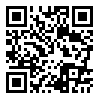Volume 14, Issue 1 (2022 2022)
JIM 2022, 14(1): 137-157 |
Back to browse issues page
Download citation:
BibTeX | RIS | EndNote | Medlars | ProCite | Reference Manager | RefWorks
Send citation to:



BibTeX | RIS | EndNote | Medlars | ProCite | Reference Manager | RefWorks
Send citation to:
gholamali A, razazifar A. (2022). Representation of Mystical Experience of Far East in Cinema. JIM. 14(1), 137-157. doi:10.22034.14.27.137
URL: http://erfanmag.ir/article-1-1312-en.html
URL: http://erfanmag.ir/article-1-1312-en.html
damghan uni
Abstract: (2029 Views)
Cinema due to its potential has depicted various issues of human kind life. One of concepts which has been represented by cinema is mystical experience. This experience is a human kind experience and encompasses ideas like immortality, Illuminations, introversion, spirituality, eternity. These concepts exist in all religions and civilizations in different shapes and many researchers have studied these concepts. The mystical concept studied in this article is mystical experience of Buddhism and Far East. There are numerous great depictions of mystical experience on the cinema screen, however Little Buddha and Baraka due to their direct approach to mystical experience and also because of 90s cinema approach to technology in making documentaries, are eminent to analyze. For analyzing films and also surveying the mystical experience, fundamental theories in the field of mystical experience, cinema and spirituality are used. In this survey which is done by descriptive- analytic method, data is gathered from library resources and watching films. At first mystical experience is defined and then mystical experience of Buddhism and Taoism are studied, finally two mentioned films are analyzed according to mystical experience.
Type of Study: Research |
Subject:
عرفان و هنر
Received: 2021/05/30 | Accepted: 2021/10/25 | Published: 2023/01/24
Received: 2021/05/30 | Accepted: 2021/10/25 | Published: 2023/01/24
Send email to the article author
| Rights and permissions | |
 |
This work is licensed under a Creative Commons Attribution-NonCommercial 4.0 International License. |



